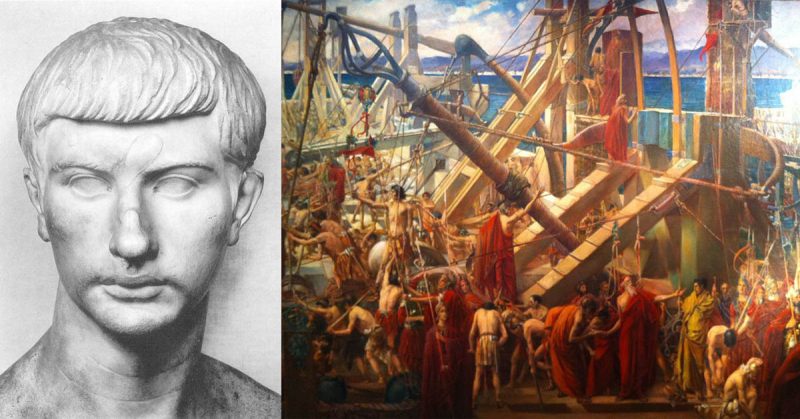All three of the Punic Wars were won by Rome, and the third war saw Carthage’s complete destruction, but there were periods where the Romans were in dire straits and needed skilled generals to lead them to victory. One such general was Scipio, who won the war in the Spanish theatre before ultimately defeating Hannibal in Italy, but Hannibal had been in Italy for over a decade before encountering Scipio. The daring and cautious generals who kept one of the worlds most talented generals from conquering Italy often do not get enough credit.
One of those generals, later known as the sword of Rome, was Marcus Claudius Marcellus. Marcellus fought bravely against the Gauls in the period between the first and second Punic War. As with most great Roman men of the time, little has been recorded about Marcellus before he held his higher offices.
We do know (from Plutarch) that Marcellus was skilled at hand to hand combat and was eager to accept challengers. Single combat prior to battles seems to have been more common than previously thought, especially during the Republic. During a battle in Sicily Marcellus saved his brother from an attack and killed those attackers, the very requirements for earning the distinguished Civic Crown award though there is no specific mention of the award.
In later campaigns against the Gauls in 225-221 BCE Marcellus, now a Consul, led an attack against a Gallic king, Viridomarus. The two leaders picked each other out of the crowd by the expensive and ornate armor they war and charged, one on one. This single combat was over quite quickly as Marcellus knocked the king off his horse and killed him. With a quick dedication to the Gods the armies clashed and the Romans, morale boosted by their commander’s victory, won an easy victory.
Marcellus continued the war with great success and was granted a triumph upon his return to Rome. By killing an opposing king and taking his armor Marcellus gained a rare and unique honor. Known as Spolia Opima the armor was viewed as one of the highest honors with only two others achieving the honor before Marcellus, one of them being Romulus. After his triumph around 220 BCE we have little record of Marcellus until 216.
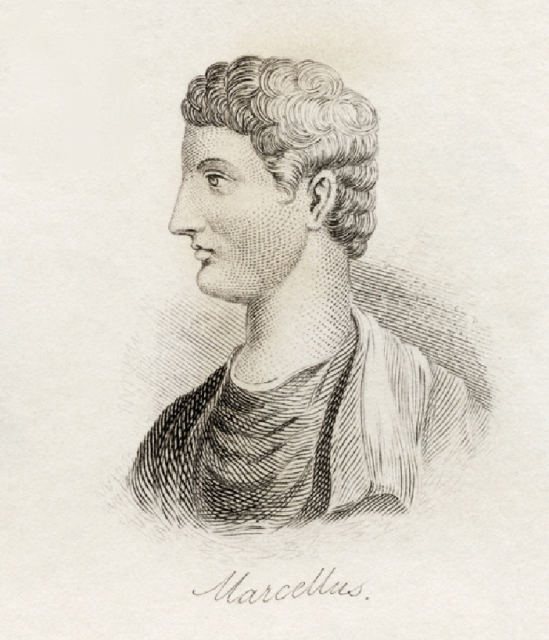
By 216 Hannibal had won his trio of devastating victories at Trebbia, Trasimene and Cannae. Rome was in turmoil and another dictator was appointed. Marcellus was appointed praetor and given an army. As praetor Marcellus was tasked with defending the fortified town of Nola from Hannibal’s army shortly after Cannae.
At Nola Marcellus organized a stiff defense of the city and succeeded in repelling Hannibal. Though this battle was far smaller than Cannae in terms of troops committed but was a huge motivational victory, being the first real setback Hannibal suffered in Italy. Over the next two years Hannibal attempted two more assaults of Nola and each time Marcellus met him and forced Hannibal to retreat.
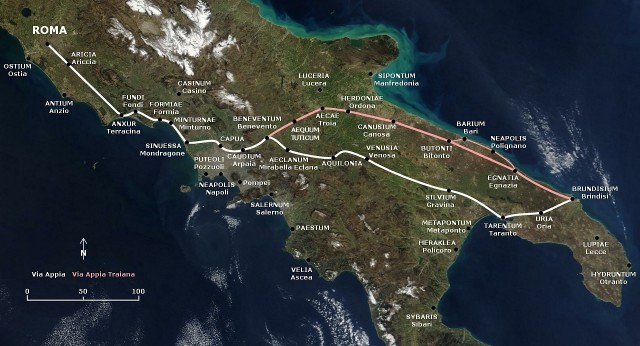
After his defenses of Nola Marcellus was sent to Sicily in 214 to regain control of Syracuse. The great city-state had been an ally under king Hiero, but upon Hiero’s death his grandson Hieronymus gained the throne and switched allegiance to Carthage. Marcellus set off to Syracuse with every intention of assaulting the city as a siege of such a well situated city could have easily lasted a decade or more.
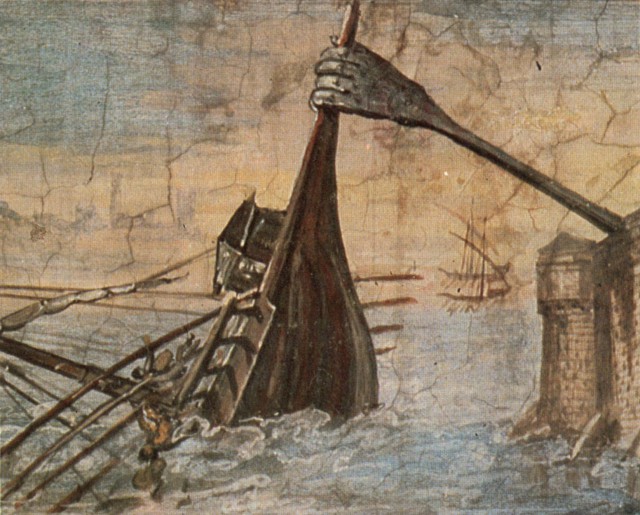
The most famous character at the siege of Syracuse was the legendary Archimedes. The mathematician and engineer conceived multiple defensive measures against the Romans, who attempted both land and sea assaults. Giant catapults sunk ships with single shots while large cranes with multi-hooked claws lifted entire ships out of the water and smashed them on the rocks. Marcellus fought back with massive platform ships carrying siege towers and was very aggressive. Though it ultimately took two years, Marcellus eventually took the city and once again brought the whole of Sicily under Roman control.
Upon returning to Italy Marcellus enjoyed quite the elevated reputation as an aggressive man of action, quite the opposite of the effective, but frustratingly cautious Fabius Maximus. Marcellus was tasked with shadowing Hannibal in southern Italy and several years were spent retaking cities that had went over to Hannibal.
Marcellus fought two pitched battles against Hannibal, one in 210 and one in 209 BCE. These battles were hard fought stalemates, with the first one ended by nightfall and the second battle fought over three days with heavy losses but no decisive victory by either side. Though Marcellus hadn’t defeated Hannibal he had done the impossible by simply not losing. As Hannibal was still in enemy territory he risked losing his invasion by force of attrition on his forces; the three day battle at Canusium cost Hannibal about 8,000 men while the Romans continued to raise new armies in Italy.
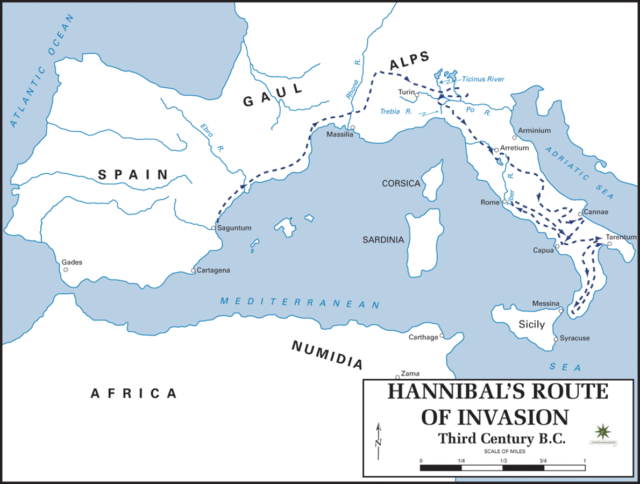
As Marcellus continued to have success he was repeatedly granted high positions, winning the consulship four times through the war. Winning another Italian command in 208, Marcellus was scouting positions with a small bodyguard when he was ambushed by a much larger force of Numidian cavalry. Marcellus was impaled by a spear and died on the field. Hannibal supposedly gave him a proper funeral and sent Marcellus’ ashes to his family, showing a great deal of respect to the general.
Marcellus had a massive impact on the course of the war. His capture of Syracuse prevented Carthage from gaining an easy path to reinforce Hannibal and eliminated a historical Sicilian power. His aggressive counters in Italy gave all of Rome hope for victory as news of Marcellus yet again keeping Nola from Hannibal was great news for the Romans to cling to after the horrible disasters of the wars early years. His aggressive retaking of defecting cities caused Hannibal to be in a never-ending game of catch up as his base of power in Southern Italy continually shrunk. Marcellus’ reputation as a warrior who could also match Hannibal in tactics allowed the senate and people of Rome to put so much trust in him that they could send armies out to Spain with an eye towards a complete strategic victory.
By William McLaughlin for War History Online
